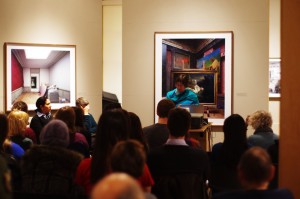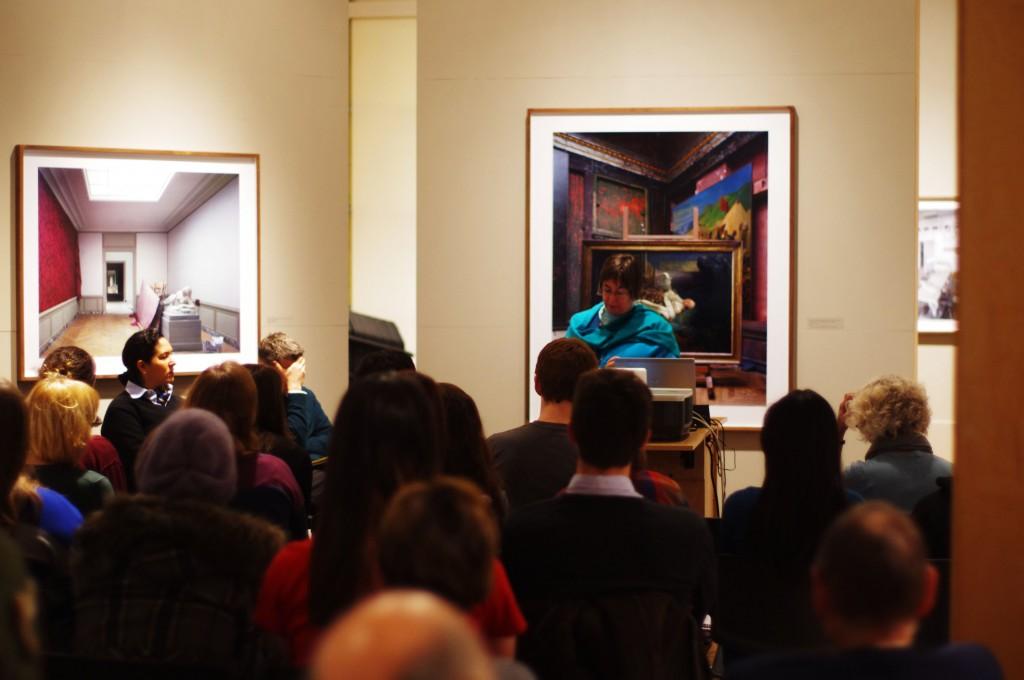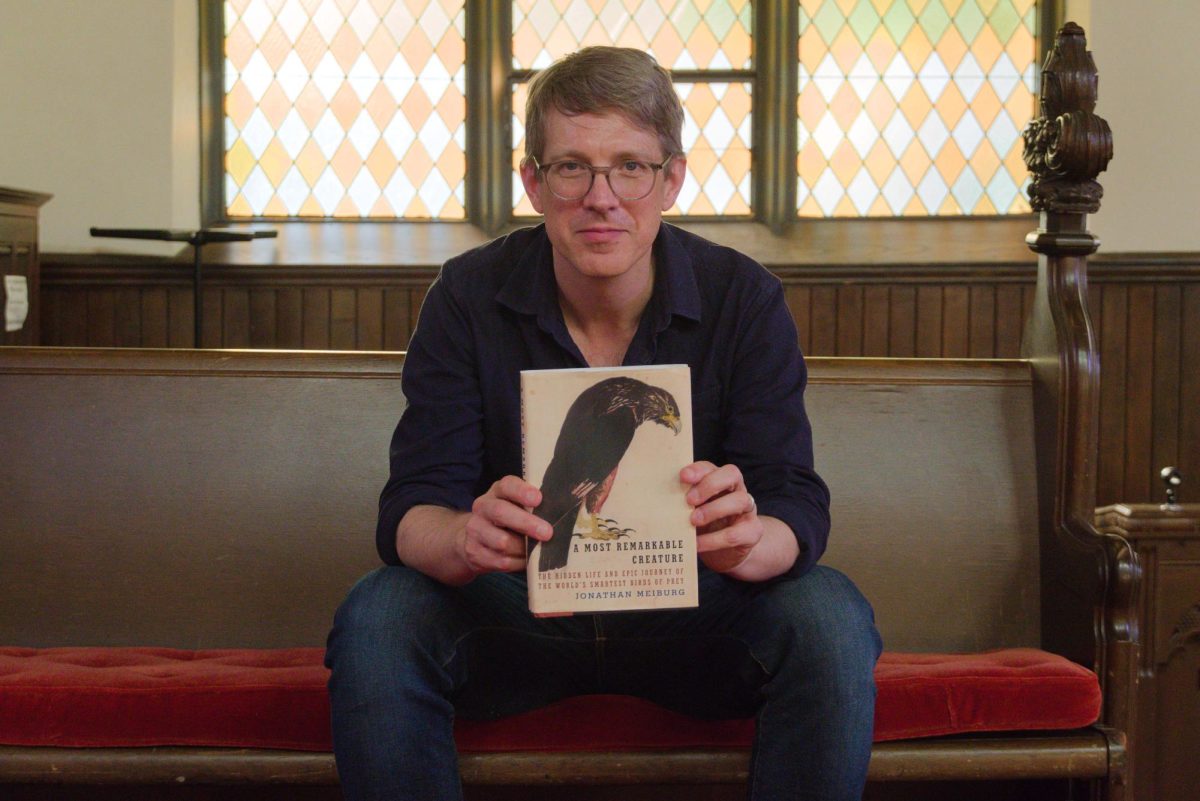By Antoinette Cudney
cudneyan@grinnell.edu
An interdisciplinary panel talked about Versailles as a space for history, culture, art and music on Tuesday February 26 in Faulconer Gallery. The presenters were Kelly Maynard, History; Jennifer Brown, chair of the Music Department; Vanessa Lyon, Art; and David Harrison, Professor of French and Director of the Center for International Studies. The panel took turns discussing various aspects of the history of Versailles as well as relating to the photographs taken in Versailles by Robert Polidori, who is currently featured in Faulconer Gallery.
Maynard began the panel by giving a brief history of Versailles. Originally a hunting lodge, King Louis XIV moved his court away from Paris to Versailles.
“This is all about celebrating the power of the king,” said Maynard. “And in moving his sight out of Paris and onto Versailles, he is forcing the nobility not to be able to put themselves on display at home… but to come to Versailles and pay homage to him.”
Maynard went on to show examples in architecture of spectacle, such as the Fifth Chapel’s interior, or the famous Hall of Mirrors. She explained that French kings were not the only people to use the spectacle and grandeur of Versailles to impress and intimidate. The Franco-Prussian war and World War I, both ended in treaties signed in the hall of mirrors. Citing that France receives over 80 million tourists, the largest amount in the world, Maynard concluded by remarking that the tradition of spectacle is still very important and relevant in modern French culture.

Brown discussed the musical and theatrical innovations that occurred during the time of Versailles.
“Dance was a central aspect to court life,” said Brown. “Much of the national passion for dance came directly from the king himself. Louis, like his father before him, was a very good dancer. … Louis danced often in both social circumstances and on the stage, and he expected his courtiers to do likewise.”
As dance in court became more and more popular, the music of this time period was also heavily inspired by dance. The King eventually retired from the stage, which meant the end of the many court dances, but at this time, the French discovered Italian opera, which combined dancing, singing, and music.
Dance continued to play a large role as the French began creating their own operas.
“This remained a defining feature of French opera throughout history. The main difference between the opera and ballets de cour was that the dancing was done by professionals. … These professionals took dance to incredible heights and developed the system that we know today as classical ballet,” Brown said.
The French were also responsible for creating a way of recording dance steps during this time period. As dance was taken up professionally in opera, more intricate steps were created, paralleling the defining intricacies of the Baroque Period.
Harrison commented on the layers in some of the pictures in the Polidori exhibit, in a bit of the context of the more modern history of Versailles.
“Louis Phillipe, who wished to be a citizen king, decided to turn the bottom floors of the castle into a museum that would, in his view, reconcile the different political factions by depicting, in painting, the historical events or factors that each faction considered important…So, the walls of the bottom floors of Versailles were knocked down… to create large museum exhibition spaces in which each could see the French history that he or she wished to see,” Harrison said.
The photographs taken in these halls depict both actual pieces from the monarchy’s era and wooden supports or coverings from this era that are meant to preserve the original works. This creates the layering affect that Harrison discussed.
“I think what Polidori captures in the photos of Versailles is not a static beauty of a 17th century castle… but the active work of how that castle shapes French history for better and for worse,” Harrison said.
Lyon, the last presenter, explained that most people take 17th century Versailles as a cautionary tale.
“Looking backward from our privileged purview in the now, we see that it was all destined to end badly from the beginning. Gluttony and pride rank high on the list of deadly sins—we tell our self-satisfied modern selves,” Lyon said.
Lyon also offered an interesting visual analysis of a photograph that was purchased by Faulconer Gallery, which depicts a painting of King Louis XVI on its side. She noted the eerie similarities between the structure of the picture and an anonymous print titled “Robespierre Himself Guillotining the Executioner Who has Finally Succeeded in Guillotining Every Last Frenchman.”
“The notion that Louis XVI too had stood one day and fallen the next seems implicit in Polidori’s photograph. Can we not read Louis’ position as that of the soon-to-be-executed executioner in the print?” Lyon said. “Can we not read the severe wooden structure of the easel, a simple machine used for holding heads of state, as a guillotine, or at least guillotine-like?”



















































